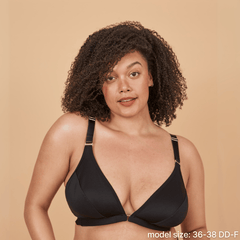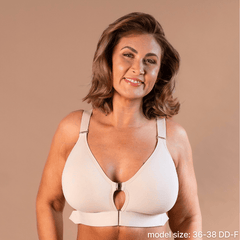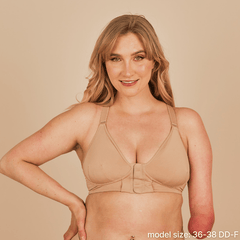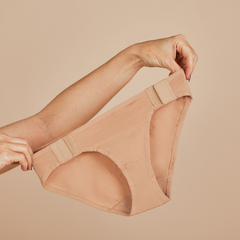
Breaking an arm is frustrating. Everyday tasks, like getting dressed, suddenly feel impossible when you’re stuck with a cast or sling.
That’s where adaptive clothing for a broken arm comes in—it’s a total game-changer. Designed to make life easier, adaptive clothes help you dress comfortably and independently without the usual struggle.
What Is Adaptive Clothing?
Adaptive clothing is designed for people with injuries, disabilities, or limited mobility, offering simple solutions for getting dressed without discomfort or frustration.
Traditional clothing often includes buttons and tight sleeves that require two functional hands or full range of motion, which isn’t always possible when recovering from an injury like a broken arm.
Adaptive clothing replaces these challenging features with more practical options that work for everyone, regardless of their mobility level.

Why Is Adaptive Clothing the Best Option for Someone With a Broken Arm?
As mentioned earlier, dressing with a broken arm can quickly turn into a painful and frustrating experience.
Traditional clothing often requires movements that are difficult or impossible when wearing a sling or cast.
Adaptive clothing addresses these challenges by providing practical, pain-free solutions like front closures, stretchy fabrics, and easy fasteners—making it the best choice for anyone with limited mobility.
-
Reduces pain: Adaptive clothing eliminates the need to twist, stretch, or force your injured arm into uncomfortable positions.
-
Saves time: Getting dressed with one hand can take forever with traditional clothing. Adaptive designs streamline the process, making it faster and far less stressful.
-
Accommodates your injury: Adaptive clothes are made with roomy openings and soft, flexible materials that easily fit over slings, casts, and swollen areas without causing discomfort.
-
Restores independence: With easy closures like Velcro and magnetic snaps, you can dress yourself without needing someone else’s help.
-
Provides comfort: Loose-fitting fabrics keep you comfortable throughout the day, avoiding tight or scratchy materials that might irritate your injury.
Adaptive clothing focuses on both function and comfort, which makes it an essential part of recovery.
It allows you to regain control of your routine, stay independent, and feel good about what you’re wearing—all while keeping your broken arm safe and supported.
Best Clothing Options for a Broken Arm
Front-Opening Shirts and Tops
Pulling a shirt over your head with one arm? Not happening. Look for shirts that open in the front, like those with Velcro, snap buttons, or zippers. Wrap-style tops and cardigans are also excellent because they require less movement.
Elastic Waist Pants and Side-Open Bottoms
Putting on pants can be tricky with limited mobility. Look for options with elastic waistbands, side openings, or wrap-style closures. They’re easier to slide on and don’t require any tugging or bending.
Ponchos and Capes
Jackets with sleeves are tough to navigate with a broken arm. Instead, go for ponchos or capes that drape over your shoulders. They’re stylish, warm, and require zero arm movement.
Adaptive Bras
Bras are a nightmare when you only have one working arm. Traditional back clasps are just not an option. That’s where adaptive bras, like the Springrose Easy-On Mobility Bra, come in.
Why the Springrose Easy-On Mobility Bra Is a Game-Changer
The Springrose Easy-On Mobility Bra is made specifically for people recovering from injuries or dealing with limited mobility. Here’s what makes it stand out:
-
Front Velcro closure: Easy to fasten with one hand.
-
Adjustable front straps: Adjust the fit without reaching behind you.
-
Soft, stretchy fabric: Gentle on your skin and fits comfortably over sensitive areas.
-
Multiple ways to wear: Step into it, pull it over your head, or use one hand—whatever works for you.
This bra makes getting dressed so much easier. It’s supportive, comfortable, and most importantly, practical for someone with a broken arm.

Quick Tips for Getting Dressed With a Broken Arm
Dressing one-handed doesn’t have to be a daily struggle. Simplify the process by following these tips:
-
Start With Your Injured Arm First: Always put your broken arm into the sleeve first to avoid unnecessary strain and make dressing easier.
-
Sit Down for Stability: Dressing while seated provides better balance, especially when putting on pants or shoes.
-
Use Dressing Aids: Tools like button hooks, dressing sticks, and sock pullers can make the process even simpler and more efficient.
Final Thoughts: Simplify Your Recovery
Recovering from a broken arm is challenging, but getting dressed doesn’t have to be. Adaptive clothing can save you time, reduce frustration, and help you feel more independent.
Start with simple changes—like front-opening tops, elastic pants, and a supportive, easy-to-wear bra like the Springrose Easy-On Mobility Bra. These small adjustments can make a big difference in your daily routine.



